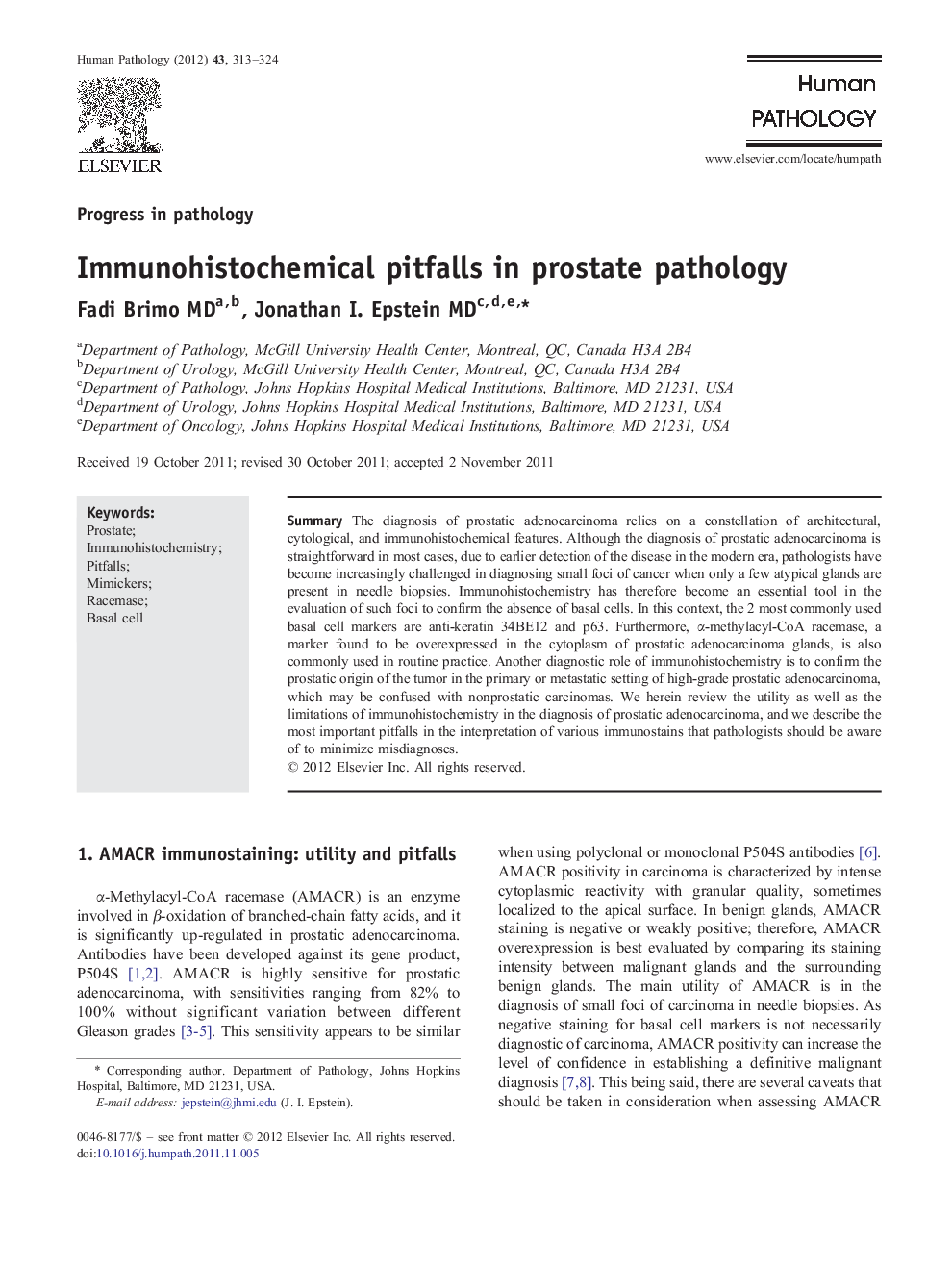| Article ID | Journal | Published Year | Pages | File Type |
|---|---|---|---|---|
| 6216251 | Human Pathology | 2012 | 12 Pages |
SummaryThe diagnosis of prostatic adenocarcinoma relies on a constellation of architectural, cytological, and immunohistochemical features. Although the diagnosis of prostatic adenocarcinoma is straightforward in most cases, due to earlier detection of the disease in the modern era, pathologists have become increasingly challenged in diagnosing small foci of cancer when only a few atypical glands are present in needle biopsies. Immunohistochemistry has therefore become an essential tool in the evaluation of such foci to confirm the absence of basal cells. In this context, the 2 most commonly used basal cell markers are anti-keratin 34BE12 and p63. Furthermore, α-methylacyl-CoA racemase, a marker found to be overexpressed in the cytoplasm of prostatic adenocarcinoma glands, is also commonly used in routine practice. Another diagnostic role of immunohistochemistry is to confirm the prostatic origin of the tumor in the primary or metastatic setting of high-grade prostatic adenocarcinoma, which may be confused with nonprostatic carcinomas. We herein review the utility as well as the limitations of immunohistochemistry in the diagnosis of prostatic adenocarcinoma, and we describe the most important pitfalls in the interpretation of various immunostains that pathologists should be aware of to minimize misdiagnoses.
